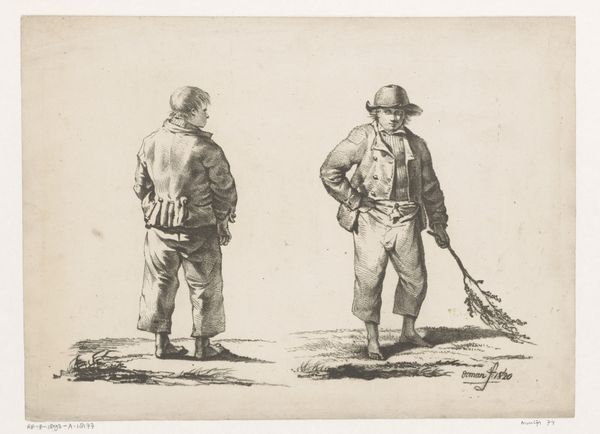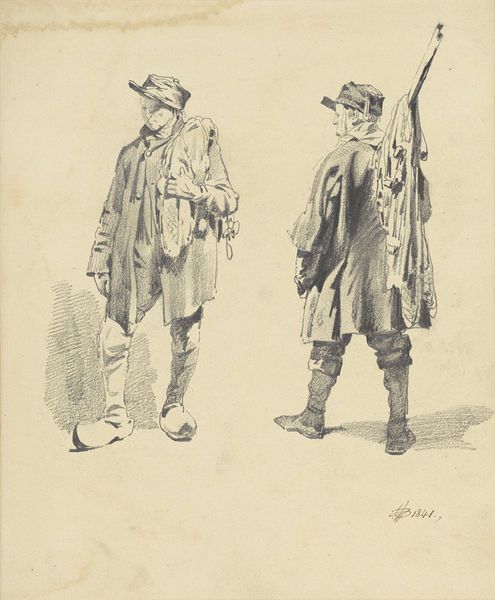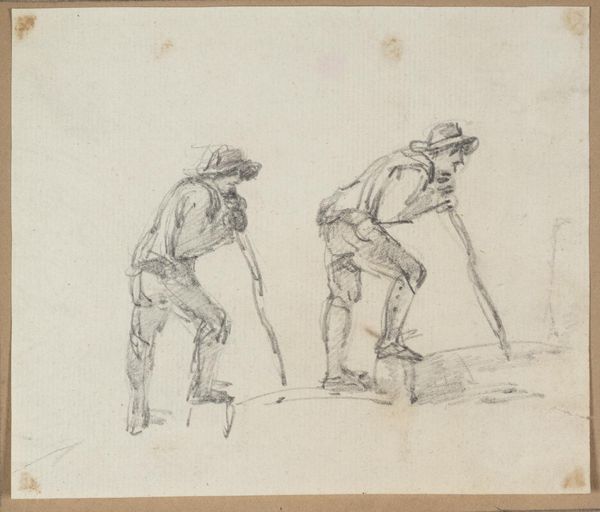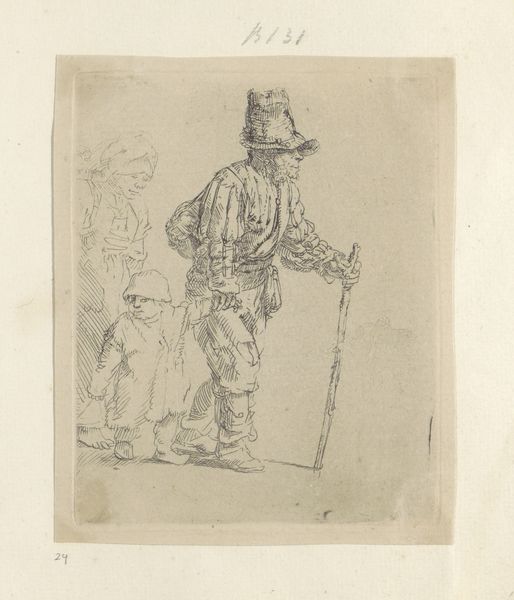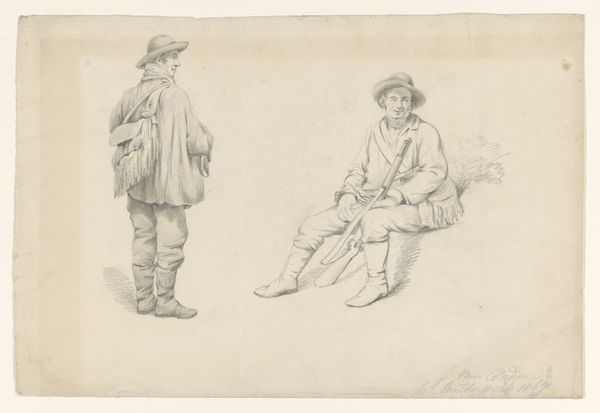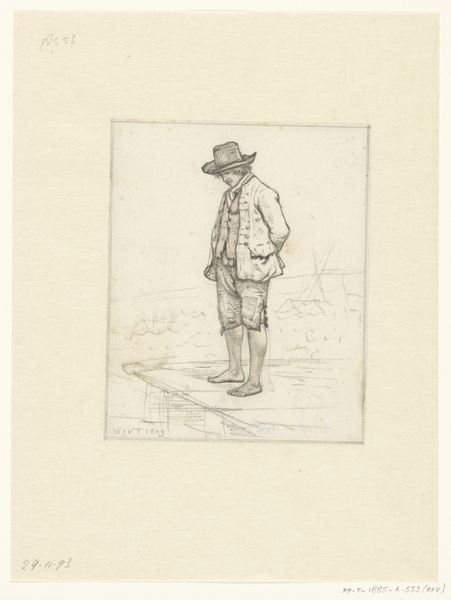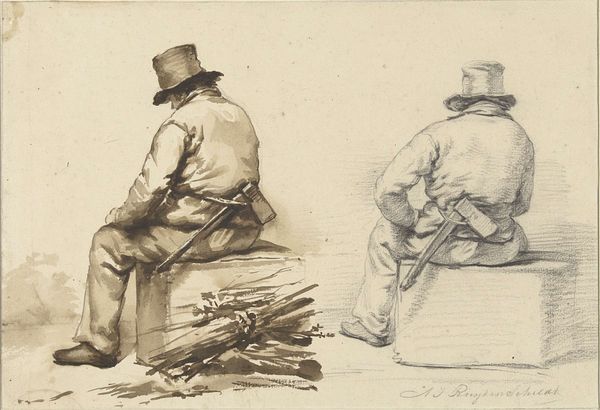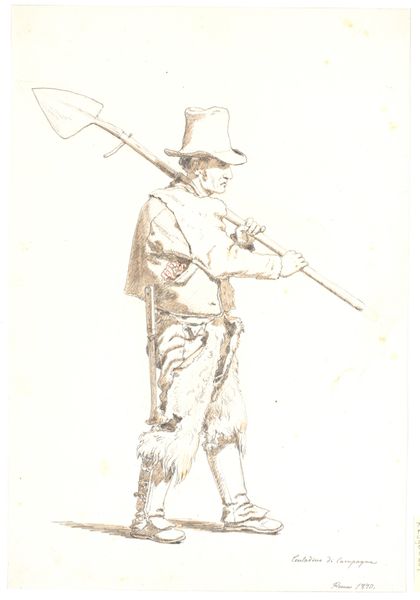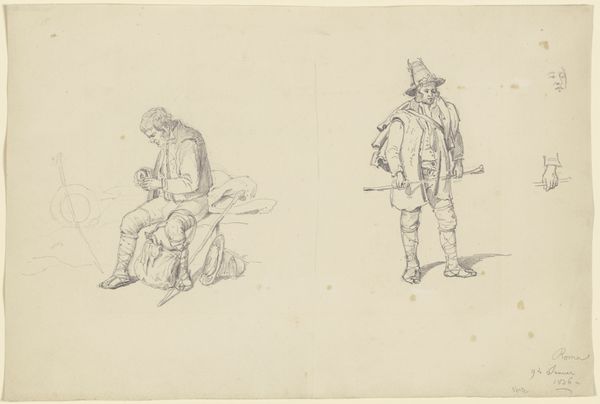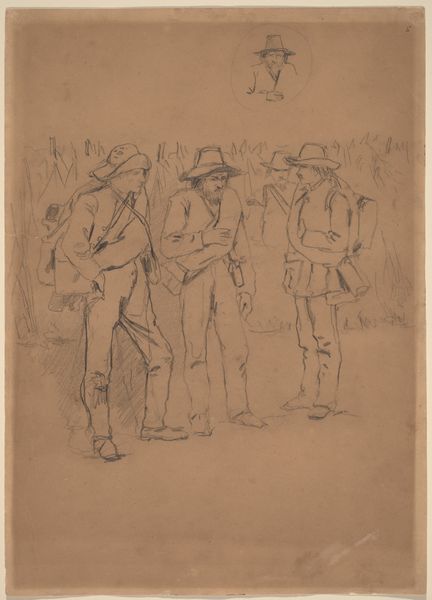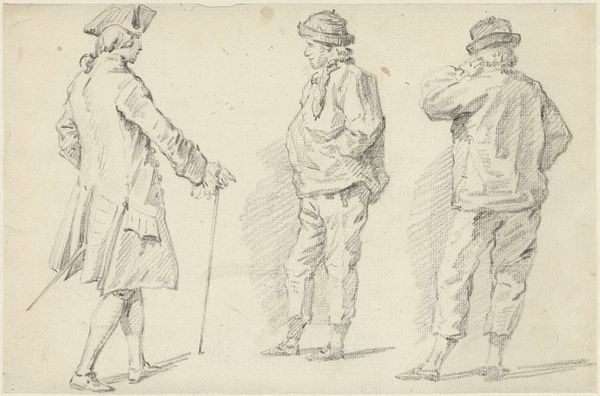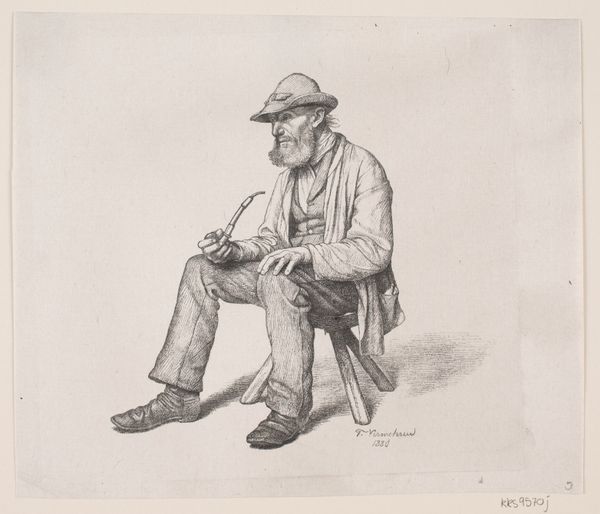
drawing, pencil
#
portrait
#
drawing
#
toned paper
#
light pencil work
#
dutch-golden-age
#
pencil sketch
#
incomplete sketchy
#
personal sketchbook
#
ink drawing experimentation
#
pencil
#
sketchbook drawing
#
pencil work
#
genre-painting
#
sketchbook art
#
fantasy sketch
#
realism
Dimensions: height 311 mm, width 373 mm
Copyright: Rijks Museum: Open Domain
Editor: Here we have "Two Studies of a Walking Man," dating roughly between 1869 and 1941, by Johannes Abraham Mondt. It's a pencil drawing, kind of a quick sketch. I'm struck by how casually he's captured these figures. What do you see in this piece? Curator: Well, seeing as it's titled 'Studies', it is more than likely the product of artistic experimentation and preliminary work, and how that itself becomes valuable is significant. We get to look behind the curtain at an artist working. This almost certainly stems from academic tradition, doesn't it? Are these men archetypes in any way? Editor: You mean, like stock characters? It's possible, with their traditional clothes and tools, it reminds me a bit of Millet’s peasants, figures representing the working class. Curator: Precisely. And think about the time period. With the rise of industrialization, artists started to look toward rural life. Mondt could be engaging with this social and political shift, idealizing or perhaps critiquing a changing world by portraying these figures in a seemingly simple, unadorned way. Editor: That makes sense! So the seemingly casual sketch isn't just a doodle. The choice of subject reflects the values of that society. Curator: Absolutely! It speaks to the larger cultural narratives at play and raises questions of artistic creation: What value does a sketch have in relation to a final piece, and what makes the life of the common man valuable? What does their portrayal in art say about their political weight in society? Editor: I never would have thought about the economic or cultural elements just from looking at this drawing. Curator: That's why art is perpetually exciting. Art isn't created in a bubble. Every artwork has a history behind it.
Comments
No comments
Be the first to comment and join the conversation on the ultimate creative platform.
